

Mike Kelley
Born: October 27, 1954
Died: January 31, 2012
in Wayne, Michigan, USA
Died: January 31, 2012
in Wayne, Michigan, USA
Mike Kelley was one of the most provocative and influential figures in contemporary art. His idiosyncratic works negotiate a charged terrain of desire, dread and sociopathology in everyday life. With deadpan humor, he invests childhood toys, kitsch, and ordinary objects with subversive meaning. His video projects, often created with collaborators such as Paul McCarthy, Raymond Pettibon, and Tony Oursler, inhabit a peculiarly American landscape infused with irony and pop cultural debris.
- - - - Michael "Mike" Kelley (October 27, 1954 in Wayne, Michigan – c. January 31, 2012 in South Pasadena) was an American artist. His work involved found objects, textile banners, drawings, assemblage, collage, performance and video.
From Wikipedia, the free encyclopedia
- - - - Michael "Mike" Kelley (October 27, 1954 in Wayne, Michigan – c. January 31, 2012 in South Pasadena) was an American artist. His work involved found objects, textile banners, drawings, assemblage, collage, performance and video.
From Wikipedia, the free encyclopedia
Movies for Mike Kelley...

Title: Day Is Done
Character: Narrator
Released: March 12, 2006
Type: Movie
Day Is Done is a carnivalesque opus, a genre-smashing epic in which vampires, dancing Goths, hillbillies, mimes and demons come together in a kind of subversive musical theater/variety revue. Running over two-and-a-half hours, this riotous theatrical spectacle unfolds as a series of episodes that form a loose, fractured narrative. The video comprises parts 2 through 32 of Kelley's multi-faceted project Extracurricular Activity Projective Reconstructions, in which trauma, abuse and repressed memory are refracted through personal and mass-cultural experience. The source material is a series of high school yearbook photographs of "extracurricular activities," specifically those that represent what Kelley has termed "socially accepted rituals of deviance." Kelley then stages video narratives around these found images.

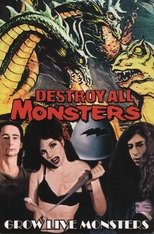
Title: Grow Live Monsters
Character: Manson victim - sax player
Released: January 1, 1995
Type: Movie
Grow Live Monsters is a selection of 8mm, super-8, and 16 mm film phantasies from the period 1971-76. While still at high school Cary Loren started a correspondence with underground filmmaker, actor, and performance artist Jack Smith, which led to a meeting in the summer of 1973. Shortly after that the artists’ band Destroy All Monsters was formed by Mike Kelley. Jim Shaw, Cary Loren, and Niagara. Most films on this DVD revolve around this group of friends and the music they produced in basements and during live performances.

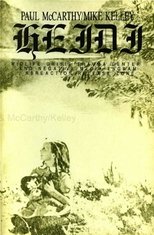
Title: Heidi: Midlife Crisis Trauma Center and Negative Media-Engram Abreaction Release Zone
Released: October 30, 1992
Type: Movie
A collaborative work based on Joanna Spyri's novel, Heidi.. The entire work consisted of a fabricated set, a group of partial and full life-size rubber figures, two large backdrop paintings, and a video tape shot entirely on the set. The set was installed at the center of the gallery (Galerie Krinzinger, Vienna)... We were interested in imitating film and television production, and exaggerating the fractured process of film. - Paul McCarthy In Heidi we toyed with this illusionary nature by treating the doubles and stand-ins for the actors as obvious sculpture, more in the manner of a puppet show than traditional film. - Mike Kelley


Title: After Modernism: The Dilemma of Influence
Character: Self
Released: January 1, 1992
Type: Movie
Since the 1960s, other disciplines, cultures, and artists previously excluded from modernism's privileged canons have become absorbed into an ever expanding field of activity and influence. Younger artists are a new breed of cultural scavengers, anything or anyone is fair game for appropriation or reinterpretation. Fascinated by notions of space, time and the human body, artists such as David Hammons, Laurie Simmons and Richard Wentworth have carved their own path through conceptual art.

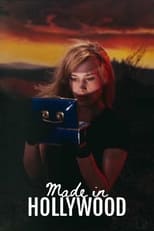
Title: Made in Hollywood
Released: January 1, 1990
Type: Movie
Steeped in irony, Made in Hollywood depicts the personal and cultural mediation of reality and fantasy, desire and identity, by the myths of television and cinema. Quoting from a catalogue of popular styles and sources, from TV commercials to The Wizard of Oz, the Yonemotos construct a parable of the Hollywood image-making industry from a pastiche of narrative cliches: A small-town ingenue goes West to find her dream and loses her innocence; the patriarch of a Hollywood studio nears death; a New York couple seeks screenwriting fame and fortune in the movies. With deadpan humor and hyperbolic visual stylization, the Yonemotos layer artifice upon artifice, constructing an image-world where reality and representation, truth and simulation, are meaningless distinctions.

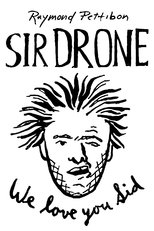
Title: Sir Drone
Character: Jinx
Released: September 13, 1989
Type: Movie
Three teenagers from the industrial part of Los Angeles try to form a punk rock band in Hollywood, in this feature length film by renowned artist Raymond Pettibon.


Title: Blind Country
Released: January 1, 1989
Type: Movie
This collaborative video project is based on a short story by H.G. Wells called "The Country of the Blind"—about a man who travels to a country of blind people and attempts to dominate their sensual, feminine culture with his male, sight-derived power. Following this theme, "Blind Country" begins with animated fruit dancing over Mike Kelley's body and the admonition of "Northerners" to "refill the quickly emptying sack." In the male-dominated land of the North, candy-spurting pinatas stand as phallic symbols. Presumably castrated, and stripped of his authority, Kelley acts the buffoon as he is led through the murky land of the South, a "female," earthy, "realm of the senses" opposing the phallocentric world of the North.

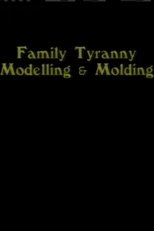
Title: Family Tyranny (Modeling and Molding)
Character: Son
Released: January 1, 1987
Type: Movie
Experimental video about child abuse. McCarthy: "I was given access to a community television studio for two days of shooting and one day of editing. I had been given the grant based on a proposal to do a video tape on child abuse. I taped for one day alone and one day with Mike Kelley. I asked Mike Kelley to be the son and I would be the father. There was no written script. After taping for two days, I edited the tapes, making two separate tapes: Family Tyranny and Cultural Soup. They are often shown together."

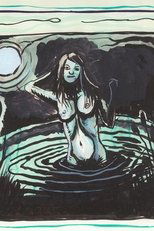
Title: Kappa
Character: The Kappa
Released: June 17, 1986
Type: Movie
Deconstructing the myth of Oedipus within the framework of an ancient Japanese folk story, the Yonemotos craft a highly charged discourse of loss and desire. Quoting from Bunuel, Freud, pop media and art, they place the symbology of Western psychosexual analytical theory into a cross-cultural context, juxtaposing the Oedipal and Kappa myths in a delirious collusion of form and content. The Kappa, a malevolent Japanese water imp, is played with eerie intensity by artist Mike Kelley; actress Mary Woronov plays Jocasta as a vamp from a Hollywood exploitation film. Steeped in perversions and violent longings, both the Kappa and Oedipus legends are presented in highly stylized, purposefully "degraded" forms, reflecting their media-exploitative cultural contexts. In this ironic yet oddly poignant essay of psychosexual compulsion and catharsis, the Yonemotos demonstrate that even in debased forms, cultural archetypes hold the power to move and manipulate.


Title: Cinderella
Character: Accordian Player
Released: April 16, 1986
Type: Movie
“CINDERELLA is a musical treatment of the fairy tale. I have broken apart the story and set it as a mechanical game with a series of repetitions where CINDERELLA is projected back and forth like a ping-pong ball between the hearth and the castle. She never succeeds in satisfying the requirements of the ‘Cinderella Game’. The film was shot MOS, the dialogue is lip-synched, and along with the out-front score and effects track magnifies the film’s sense of alienation.” — E.B. 1984 - Preserved by the Academy Film Archive in 2017.

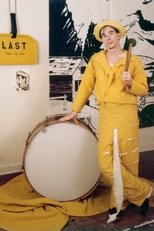
Title: The Banana Man
Released: January 1, 1983
Type: Movie
"This is my only truly solo video project. The tape is an exploration of character and was done in direct reaction to my performance work at the time, which was characterless. Video seemed a good way, by virtue of it not operating in 'real' time, of dealing with character and psychological motivation. 'The Banana Man' was a minor figure on a children's television show I watched in my youth. I, myself, never saw this performer. Everything I know about him was told to me by my friends. The Banana Man is an attempt at constructing the psychology of the character — problematized by the fact that the character is already a fictional one, and by the fact that none of my observations were direct ones."

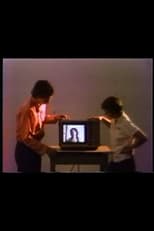
Title: Garage Sale II
Released: January 1, 1980
Type: Movie
Featuring performances by artists Tony Oursler and Mike Kelley, Garage Sale II moves between a couple’s sexually dysfunctional relationship and a series of vignettes in which characters attempt to fulfil their desires through prosthetics, masturbation, manipulation and S&M.

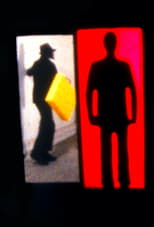
Title: The Broken Rule
Released: January 1, 1979
Type: Movie
“THE BROKEN RULE is my reaction to the American education system, where learning blocks must be acquired by the group before any individual can progress to the next level. My film pictures learning blocks as relay races conducted by male players, where the girls are scores, and the goal is to enter the working world by the end of the game. Mike Kelley, the lead player in my film, makes a ritual out of his mistakes to escape the consequences of his mistakes. In this film, one person’s work is another person’s play, and play creates competition, a component of work.” — E.B. 1979
